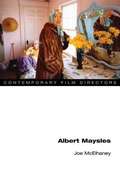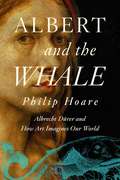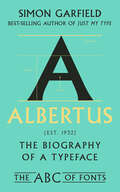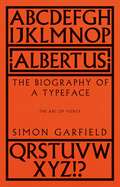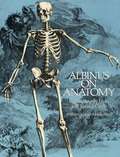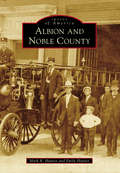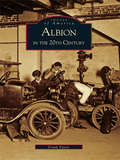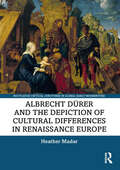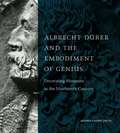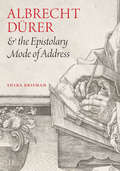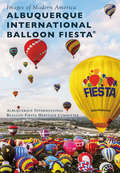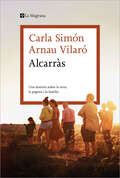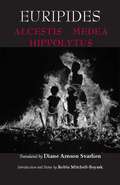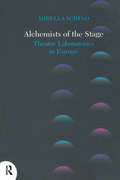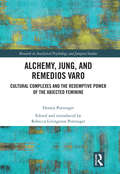- Table View
- List View
Alaska's Whaling Coast
by Dale VinnedgeIn 1850, commercial whaling ships entered the Bering Sea for the first time. There, they found the summer grounds of bowhead whales, as well as local Inuit people who had been whaling the Alaskan coast for 2,000 years. Within a few years, almost the entire Pacific fleet came north each June to find a path through the melting ice, and the Inuit way of whaling--in fact, their entire livelihood--would be forever changed. Baleen was worth nearly $5 a pound. But the new trading posts brought guns, alcohol, and disease. In 1905, a new type of whaling using modern steel whale-catchers and harpoon cannons appeared along the Alaskan coast. Yet the Inuit and Inupiat continue whaling today from approximately 15 small towns scattered along the Arctic Ocean and the Bering Strait. Whaling for these people is a life-or-death proposition in a land considered uninhabitable by many, for without the whale, whole villages probably could not survive as they have for centuries.
Albanian Cinema through the Fall of Communism: Silver Screens and Red Flags (Eastern European Screen Cultures)
by Bruce WilliamsAlbanian cinema truly represents a terra incognita for most of the world. Decidedly Europe’s most isolated country during the Cold War era, communist Albania had already been cut off from the West for centuries as a one of the western-most outposts of the Ottoman empire. Nonetheless, and unknown to most of the world, communist Albania had a vibrant cinema tradition. Although bound by official orthodoxy, the films of the state-run Kinostudio enterprise were surprisingly innovative and, at times, daringly subversive. This book opens with examinations of moving images in Albania from the Ottoman period, through those captured under independence and the Fascist occupation. It subsequently foregrounds transformations in Kinostudio, from the early optimism of socialist realism through the brooding social angst of the 1980s, which constitute a bridge to the socioeconomic concerns of Albanian films of the postcommunist period.
Albert Brooks: Interviews (Conversations with Filmmakers Series)
by Alexander GreenhoughAlbert Brooks: Interviews brings together fourteen profiles of and conversations with Brooks (b. 1947), in which he contemplates, expounds upon, and hilariously jokes about the connections between his show business upbringing, an ambivalence about the film industry, the nature of fame and success, and the meaning and purpose of comedy. Throughout all these encounters, Brooks expresses an unwavering commitment to his own artistic expression as a filmmaker and a rejection of mainstream conventions. With his questioning and critical disposition, nothing seems certain for Albert Brooks except for the integrity of art and the necessity for a wry skepticism about the incongruities of everyday life in corporate America. Brooks is neither a Hollywood insider nor an outsider. He’s somewhere in-between. Since the early 1970s, this inimitable actor-writer-director has incisively satirized the mass media system from within. After initial work as an inventive comedian, both live and on network television, Brooks contributed six shorts to the first season of Saturday Night Live, which earned him a cult following for their avant-garde form and sensibility. These were followed by his feature debut, Real Life, the first of only seven films—including Modern Romance, Lost in America, and Defending Your Life—that Brooks has directed to date. His limited output reflects not only the difficulty in financing idiosyncratic films, but equally the exacting seriousness which Brooks has in making audiences laugh and think at the same time.
Albert Finney: A Well-Seasoned Life
by Gabriel Hershman‘Hershman has managed to gather a huge amount of information and distill it into a book that is not only respectful but full of insights into what makes this unstarriest of stars able to produce brilliant work without appearing to break a sweat.’ - Kathryn Hughes, Mail on SundayHe was a Salford-born, homework-hating bookie’s son who broke the social barriers of British film. He did his share of roistering, and yet outlived his contemporaries and dodged typecasting to become a five-time Oscar nominee and one of our most durable international stars. Bon vivant, perennial rebel, self-effacing character actor, charismatic charmer, mentor to a generation of working-class artists, a byword for professionalism, lover of horseflesh and female flesh – Albert Finney is all these things and more.Gabriel Hershman’s colourful and riveting account of Finney’s life and work, which draws on interviews with many of his directors and co-stars, examines how one of Britain’s greatest actors built a glittering career without sacrificing his integrity.
Albert Maysles (Contemporary Film Directors)
by Joe McelhaneyAlbert Maysles has created some of the most influential documentaries of the postwar period. Such films as Salesman,Gimme Shelter, and Grey Gardens continue to generate intense debate about the ethics and aesthetics of the documentary form. In this in-depth study, Joe McElhaney offers a novel understanding of the historical relevance of Maysles. By closely focusing on Maysles's expressive use of his camera, particularly in relation to the filming of the human figure, this book situates Maysles's films within not only documentary film history but film history in general, arguing for their broad-ranging importance to both narrative film and documentary cinema. Complete with an engaging interview with Maysles and a detailed comparison of the variant releases of his documentary on the Beatles (What's Happening: The Beatles in the U.S.A. and The Beatles: The First U.S. Visit), this work is a pivotal study of a significant filmmaker.
Albert P. Ryder (The Great American Artists Series)
by Lloyd GoodrichAlbert Pinkham Ryder, along with Winslow Homer and Thomas Eakins, is recognized as one of the great “ancestors” of American painting, although he was largely unknown in his own time. Twentieth-century taste discovered him and his mystical pictures have had a profound effect on modern abstract art.Lloyd Goodrich is Director of the Whitney Museum of American Art under whose auspices his definitive biography of Thomas Eakins was published in 1933. For many years Mr. Goodrich has been carrying on research in the life and work of Albert P. Ryder, in preparation for a definitive biography. Since Ryder’s work has been widely forged, with the forgeries outnumbering the genuine pictures about eight to one, this study has involved examination of hundreds of paintings, using x-rays and other scientific methods. The present volume, originally published in 1959, has the advantage of these years of thorough study.
Albert and the Whale: Albrecht Dürer and How Art Imagines Our World
by Philip HoareAn illuminating exploration of the intersection between life, art and the sea from the award-winning author of The Whale.In 1520, Albrecht Dürer, the most celebrated artist in Northern Europe, sailed to Zeeland to see a whale. A central figure of the Renaissance, no one had painted or drawn the world like him. Dürer drew hares and rhinoceroses in the way he painted saints and madonnas. The wing of a bird or the wing of an angel; a spider crab or a bursting star like the augury of a black hole, in Dürer's art, they were part of a connected world. Everything had meaning. But now he was in crisis. He had lost his patron, the Holy Roman Emperor. He was moorless and filled with wanderlust. In the shape of the whale, he saw his final ambition. Dürer was the first artist to truly employ the power of reproduction. He reinvented the way people looked at, and understood, art. He painted signs and wonders; comets, devils, horses, nudes, dogs, and blades of grass so accurately that even today they seem hyper-real, utterly modern images. Most startling and most modern of all, he painted himself, at every stage of his life. But his art captured more than the physical world, he also captured states of mind. Albert and the Whale explores the work of this remarkable man through a personal lens. Drawing on Philip&’s experience of the natural world, and of the elements that shape our contemporary lives, from suburbia to the wide open sea, Philip will enter Dürer's time machine. Seeking his own Leviathan, Hoare help us better understand the interplay between art and our world in this sublimely seductive book.
Albertus: The Biography of a Typeface (The ABC of Fonts Series #0)
by Simon GarfieldA compact and charming history of the beloved handcrafted font by the New York Times best-selling author of Just My Type. Albertus, first carved on a bronze tablet in the 1930s by German Jewish refugee Berthold Wolpe, has proved to be one of the most enduring handcrafted typefaces in the world. It is at once modern and timeless, authoritative and whimsical—renowned as the typeface of London Street signs, David Bowie albums, and Star Wars movie posters. In this unique celebration, best-selling author Simon Garfield charts the story of the creation of Albertus, its innumerable and vibrant uses, and the erratic brilliance of its designer, as recounted by Wolpe’s children. Through his exploration of this singular font, Garfield grapples with one of the most fundamental artistic questions: what makes great art not only survive but flourish in each new age and medium?
Albertus: The Biography of a Typeface (The ABC of Fonts) (The ABC of Fonts)
by Simon GarfieldOne of the most beautiful handcrafted typefaces in the world, Albertus is also one of the most enduring. The face of thousands of book jackets, and the chosen look for David Bowie, Coldplay, Star Wars and London street signs, Albertus is as as warmly enticing on film posters as it is on memorial plaques.The story of the font is one displacement (its designer Berthold Wolpe was a German Jewish refugee who went on to design the masthead for The Times), but also one of permanence, for it has proved a fresh, vibrant and indestructible face for almost a century. In this unique celebration, the designer's children reveal the history of its creation and the erratic brilliance of their father, while the book grapples with one of the fundamental artistic questions: what makes great art not only survive but flourish in each new age and medium?
Albinus on Anatomy
by Robert Beverly Hale Terence CoyleAll 80 of the great 18th-century descriptive anatomist's original copperplate engravings of the human skeletal and muscular systems, containing 230 individual illustrations, are reproduced in this edition. Muscles and bones are rendered individually and in related groups from varying perspectives. A work of great scientific merit, this volume is a magnificent work of art as well.
Albion (Images of America)
by Avis A. TownsendAlbion highlights a historic community in the Lake Ontairo region of western New York State. With vintage photographs and fascinating detail, the book records Courthouse Square, early salt roads and quarries, splendid cobblestone houses, the Erie Canal passing through town, famous resident George Pullman, Rich's Corners, two correctional facilities, and the outstanding garden-style Mount Albion Cemetery.
Albion and Noble County (Images of America)
by Emily Hunter Mark R HunterNamed after Indiana's first US senator, Noble County was formed in 1836, just eight years after the first recorded white settlers arrived and 20 years after Indiana's formation. Settlements grew with transportation: a trail from Fort Wayne became the now-historic Lincoln Highway; the Sylvan Lake dam, built to supply a proposed canal, attracted author Gene Stratton Porter; and railroads arrived. Each time the population grew and shifted until the citizens voted to place the county seat in "The Center," the geographic center of Noble County. Soon, Albion occupied the space, making it the smallest township in America. With 117 lakes, the Elkhart River, a state park, and numerous historic sites, Noble County became a destination for tourists, while Albion's historical downtown area, centered on a century-old courthouse in a town carved from wilderness, stands in the center of it all.
Albion in the 20th Century (Images of America)
by Frank PassicThe Albion Malleable Iron Company was the major influence in bringing hundreds of workers from eastern and southern Europe, and from southern U.S. states to Albion, Michigan, in the early 20th century. These workers established their families and lived their lives in this industrial town, which grew to become a true "melting pot" of ethnic diversity in the 20th century.Albion in the 20th Century features more than 225 photographs from the personal collection of Albion historian Frank Passic, which chronologically show the changes in the community. The book focuses on everyday workers (including union officials and factory workers) and ball teams-plus "famous" people such as wildlife artist Lynn Bogue Hunt and writer-photographer Gwen Dew. Notable events chronicled include the capture of the Purple Gang car, the 1994 NCAA Division III Albion College Britons national football championship, and the Cardboard Classic sled race.
Albrecht Durer: A Guide to Research (Artist Resource Manuals)
by Jane Campbell HutchisonHutchison's book is a complete guide on Durer and the research on his work, his historical import and his aesthetic legacy.
Albrecht Dürer and the Depiction of Cultural Differences in Renaissance Europe (Routledge Critical Junctures in Global Early Modernities)
by Heather MadarThis book provides a comprehensive assessment of Dürer’s depictions of human diversity, focusing particularly on his depictions of figures from outside his Western European milieu. Heather Madar contextualizes those depictions within their broader artistic and historical context and assesses them in light of current theories about early modern concepts of cultural, ethnic, religious and racial diversity. The book also explores Dürer’s connections with contemporaries, his later legacy with respect to his imagery of the other and the broader significance of Nuremberg to early modern engagements with the world beyond Europe. The book will be of interest to scholars working in art history, Renaissance studies and Renaissance history.
Albrecht Dürer and the Embodiment of Genius: Decorating Museums in the Nineteenth Century
by Jeffrey Chipps SmithDuring the nineteenth century, Albrecht Dürer’s art, piety, and personal character were held up as models to inspire contemporary artists and—it was hoped—to return Germany to international artistic eminence. In this book, Jeffrey Chipps Smith explores Dürer’s complex posthumous reception during the great century of museum building in Europe, with a particular focus on the artist’s role as a creative and moral exemplar for German artists and museum visitors.In an era when museums were emerging as symbols of civic, regional, and national identity, dozens of new national, princely, and civic museums began to feature portraits of Dürer in their elaborate decorative programs embellishing the facades, grand staircases, galleries, and ceremonial spaces. Most of these arose in Germany and Austria, though examples can be seen as far away as St. Petersburg, Stockholm, London, and New York City. Probing the cultural, political, and educational aspirations and rivalries of these museums and their patrons, Smith traces how Dürer was painted, sculpted, and prominently placed to accommodate the era’s diverse needs and aspirations. He investigates what these portraits can tell us about the rise of a distinct canon of famous Renaissance and Baroque artists—addressing the question of why Dürer was so often paired with Raphael, who was considered to embody the greatness of Italian art—and why, with the rise of German nationalism, Hans Holbein the Younger often replaced Raphael as Dürer’s partner.Accessibly written and comprehensive in scope, this book sheds new light on museum building in the nineteenth century and the rise of art history as a discipline. It will appeal to specialists in nineteenth-century and early modern art, the history of museums and collecting, and art historiography.
Albrecht Dürer and the Embodiment of Genius: Decorating Museums in the Nineteenth Century
by Jeffrey Chipps SmithDuring the nineteenth century, Albrecht Dürer’s art, piety, and personal character were held up as models to inspire contemporary artists and—it was hoped—to return Germany to international artistic eminence. In this book, Jeffrey Chipps Smith explores Dürer’s complex posthumous reception during the great century of museum building in Europe, with a particular focus on the artist’s role as a creative and moral exemplar for German artists and museum visitors.In an era when museums were emerging as symbols of civic, regional, and national identity, dozens of new national, princely, and civic museums began to feature portraits of Dürer in their elaborate decorative programs embellishing the facades, grand staircases, galleries, and ceremonial spaces. Most of these arose in Germany and Austria, though examples can be seen as far away as St. Petersburg, Stockholm, London, and New York City. Probing the cultural, political, and educational aspirations and rivalries of these museums and their patrons, Smith traces how Dürer was painted, sculpted, and prominently placed to accommodate the era’s diverse needs and aspirations. He investigates what these portraits can tell us about the rise of a distinct canon of famous Renaissance and Baroque artists—addressing the question of why Dürer was so often paired with Raphael, who was considered to embody the greatness of Italian art—and why, with the rise of German nationalism, Hans Holbein the Younger often replaced Raphael as Dürer’s partner.Accessibly written and comprehensive in scope, this book sheds new light on museum building in the nineteenth century and the rise of art history as a discipline. It will appeal to specialists in nineteenth-century and early modern art, the history of museums and collecting, and art historiography.
Albrecht Dürer and the Epistolary Mode of Address
by Shira BrismanArt historians have long looked to letters to secure biographical details; clarify relationships between artists and patrons; and present artists as modern, self-aware individuals. This book takes a novel approach: focusing on Albrecht Dürer, Shira Brisman is the first to argue that the experience of writing, sending, and receiving letters shaped how he treated the work of art as an agent for communication. In the early modern period, before the establishment of a reliable postal system, letters faced risks of interception and delay. During the Reformation, the printing press threatened to expose intimate exchanges and blur the line between public and private life. Exploring the complex travel patterns of sixteenth-century missives, Brisman explains how these issues of sending and receiving informed Dürer’s artistic practices. His success, she contends, was due in large part to his development of pictorial strategies—an epistolary mode of address—marked by a direct, intimate appeal to the viewer, an appeal that also acknowledged the distance and delay that defers the message before it can reach its recipient. As images, often in the form of prints, coursed through an open market, and artists lost direct control over the sale and reception of their work, Germany’s chief printmaker navigated the new terrain by creating in his images a balance between legibility and concealment, intimacy and public address.
Albuquerque Beer: Duke City History on Tap (American Palate)
by Chris JacksonAlbuquerque’s commercial brewing scene dates back to 1888, when the Southwestern Brewery & Ice Company was launched. It later churned out thirty thousand barrels of beer per year and distributed throughout the region. Nearly thirty years later, Prohibition halted brewing save for a brief comeback in the late 1930s. In 1993, the modern era emerged with a handful of breweries opening across the city. However, Marble Brewery’s 2008 opening revived Albuquerque’s dormant craft beer scene. Since its opening, the city has welcomed dozens of breweries, brewpubs and taprooms. Writer Chris Jackson recounts the hoppy history of brewing in the Duke City.
Albuquerque International Balloon Fiesta® (Images of Modern America)
by Albuquerque International Balloon Fiesta Heritage CommitteeFrom its humble beginning in 1972 when 13 hot-air balloons ascended from an Albuquerque shopping center parking lot to a stunning annual gathering of 500-plus aeronauts, the Albuquerque International Balloon Fiesta lives on as the most-photographed air show on the planet. As you page through this book, imagine yourself going along for the ride and soaring to new heights. Or if you prefer to keep your feet on the ground, imagine yourself strolling among hundreds of swaying giants, seemingly lost in a dizzying kaleidoscope of color. Join in the camaraderie that draws pilots and fans to Albuquerque from all over the world. You will find yourself mesmerized by the Balloon Fiesta’s signature events and its spirited competition among hot-air balloon pilots. As an added attraction, step back in time to when hydrogen-gas balloons once graced Albuquerque skies and enjoy the fascinating world of silent flight, the America’s Challenge Gas Balloon Race.
Alcarràs: Una història sobre la terra, la pagesia i la família
by Carla SimónUna història sobre la terra, la pagesia i la família Un viatge al cor d'Alcarràs -tot el que hi ha al darrere i al cor la pel·lícula- que recull el guió i la concepció de la pel·lícula que ja és al cim del cinema en català: com va ser pensada, definida i rodada per la seva creadora, Clara Simón, i el coguinista per Arnau Vilaró . A les pàgines d' aquest llibre, no només hi podrem conèixer Alcarràs i la família Solé, sinó també la Carla Simón i la seva manera de fer cinema i d'entendre'l: sempre des de l'amor i el respecte, treballant les pel·lícules com si fossin peces d'orfebreria La crítica ha dit:«Alcarràs és una joia amb gust a préssec i Carla Simón una directora genial que ha fet orfebreria! Una pel·lícula que, per sobre de tot, és veritat».Jordi Basté «A Alcarràs, la llengua ens situa en aquest punt del mapa i no en cap altre, una parla indestriable de tots els sorolls i silencis».Marta Rojals «Alcarràs ens ha fet pujar l’autoestima com a país. Aquest premi ha anat molt més enllà d’una pel·lícula de cinema, ha anat a un poble, a una llengua, a un camp que es perd».Natza Farré «Senzillament, la vida».Jaume Figueras
Alcatraz: History and Design of a Landmark
by Ira Nadel Donald MacDonaldThis illustrated volume by the authors of Golden Gate Bridge explores the history and design of San Francisco’s infamous island prison.Award-winning architect Donald MacDonald and acclaimed author Ira Nadel present the first complete history of Alcatraz told through its architecture. In friendly illustrations and accessible text, Alcatraz reveal the design decisions that have shaped the island from its first brick and masonry fortress to the infamous concrete cellblock, to the landscape design of its contemporary gardens and bird sanctuaries.Packed with intriguing facts throughout, this little treasure allows an unprecedented glimpse into the life of the island. It is an entertaining look at one of the nation’s most visited destinations.
Alcestis, Medea, Hippolytus
by Euripides Diane Arnson Svarlien Robin Mitchell-BoyaskThis new volume of three of Euripides' most celebrated plays offers graceful, economical, metrical translations that convey the wide range of effects of the playwright's verse, from the idiomatic speech of its dialogue to the high formality of its choral odes.
Alchemists of the Stage: Theatre Laboratories in Europe (Routledge Icarus Ser.)
by Mirella SchinoWhat is a theatre laboratory? Why a theatre laboratory? This book tries to answer these questions focusing on the experiences and theories, the visions and the techniques, the differences and similarities of European theatre laboratories in the twentieth century. It studies in depth the Studios of Stanislavski and Meyerhold, the school of Decroux, the Teatr Laboratorium of Jerzy Grotowski and Ludwik Flaszen, as well as Eugenio Barba's Odin Teatret. Theatre laboratories embody a theatre practice which defies the demands and fashions of the times, the usual ways of production and the sensible functions which stage art enjoys in our society. It is a theatre which refuses to be only art and whose radical research forges new conditions with a view to changing both the actor and the spectator. This research transforms theatrical craft into a laboratory which has been compared to the laboratory of the alchemists, who worked not on material but on substance. The alchemists of the stage did not operate only on forms and styles, but mainly on the living matter of the theatre: the actor, seen not just as an artist but above all as a representative of a new human being. Laboratory theatres have rarely been at the centre of the news. Yet their underground activity has influenced theatre history. Without them, the same idea of theatre, as it has been shaped in the course of the twentieth century, would have been different. In this book Mirella Schino recounts, as in a novel, the vicissitudes of a group of practitioners and scholars who try to uncover the technical, political and spiritual perspectives behind the word laboratory when applied to the theatre.
Alchemy, Jung, and Remedios Varo: Cultural Complexes and the Redemptive Power of the Abjected Feminine (Research in Analytical Psychology and Jungian Studies)
by Dennis PottengerAlchemy, Jung, and Remedios Varo offers a depth psychological analysis of the art and life of Remedios Varo, a Spanish surrealist painter. The book uses Varo’s paintings in a revolutionary way: to critique the patriarchal underpinnings of Jungian psychology, alchemy, and Surrealism, illuminating how Varo used painting to address cultural complexes that silence female expression. The book focuses on how the practice of alchemical psychology, through the power of imagination and the archetypal Feminine, can lead to healing and transformation for individuals and culture. Alchemy, Jung, and Remedios Varo offers the first in-depth psychological treatment of the role alchemy played in the friendship between Varo and Leonora Carrington—a connection that led to paintings that protest the pitfalls of patriarchy. This unique book will be of great interest for academics, scholars, and post-graduate students in the fields of analytical psychology, art history, Surrealism, cultural criticism, and Jungian studies.




